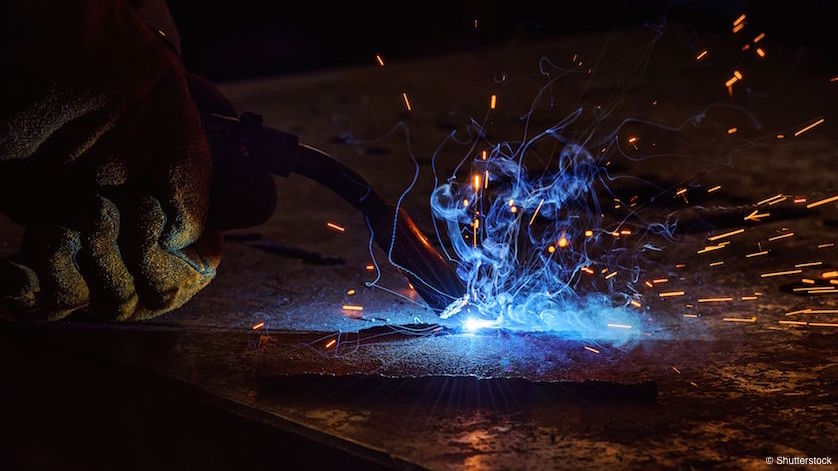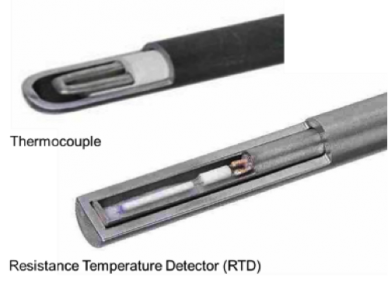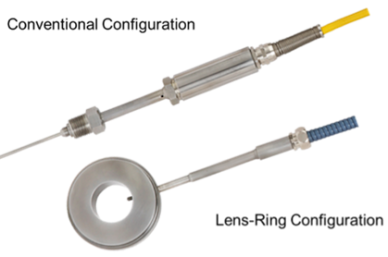
High-pressure applications put a lot of stress on measuring instrumentation. Making matters worse are high temperatures and heavy vibrations. Choosing the right thermocouple is essential for ensuring safe and reliable operations.

Temperature measurement instruments
Numerous applications call for high-pressure conditions. These include low-density polyethylene (LDPE) processes, waterjet cutting, and hydraulic test benches. Extreme pressures are particular taxing on temperature sensors. The challenge is to find the instrumentation with the right balance of sensitivity and strength. The wrong one can prove to be the Achilles’ heel of the entire process.
Resistance thermometers (RTDs) and thermocouples are the two temperature sensors commonly used in high-pressure industrial applications. RTDs work very well in high-pressure applications, but only if temperatures are in the −328 to +1,112°F range (−200 to +600°C). And it just happens that most high-pressure applications, such as LDPE, also experience high temperatures and vibrations. Therefore, thermocouples are better suited for high-pressure environments.

TC90 high-pressure thermocouple
Thermocouples for High-Pressure Applications
The TC90 thermocouple is ideal for high-pressure applications. Two to eight conductors are sheathed within a mineral insulated (MI) cable; the mineral is a highly compressed powder made of a metal oxide, usually magnesium oxide (MgO) or aluminum oxide (Al2O3). The insulated cable construction is very robust and extremely resistant to high pressures, high temperatures, and vibrations – so much so that the TC90 can be inserted directly into the process, if desired. In addition, thanks to the MI cable’s small diameter, this thermocouple allows for a very fast response time.
Incorporating the Thermocouple into the Process
Even the best thermocouple will not give the expected results if it is not properly fitted into the application. That’s why it’s so important to choose the right process connection type, the right interface between the MI cable and the fitting, and the right configuration.
Process connection
Threaded process connections with fine threads or with a sealing cone are ideal. Fine threads are used for high pressure because they are stronger than coarse threads and are less likely to loosen when under pressure and vibration.
Fitting interface
The interface between the MI cable and its fitting is a key variable in temperature accuracy and response times. Vacuum brazing is a better joining process than either traditional seal welding or hand brazing. This automated brazing process, which creates a repeatable, homogenous bond between the metals, is done in a vacuum chamber in which the temperature remains constant. The results of this clean process are minimal void spaces and high joint strength.
Configuration

High-pressure thermocouple arrangements
Two thermocouple arrangements work best for high-pressure applications:
- The conventional configuration is one where the thermocouple assembly is either threaded or flanged to the process.
- The lens-ring arrangement is one where the thermocouple is mounted in a metallic lens-ring gasket that is compressed between two flanges and creates a seal. The lens-ring gasket is what creates the seal; the thermocouple simply uses the gasket for mounting and for access to the process for measuring.
Testing of Thermocouples for High-Pressure Applications
WIKA technicians make sure our temperature sensors can withstand the pressures, temperatures, and vibration found in your high-pressure applications. To do so, the sensors undergo a battery of rigorous tests, including:
- Pressure stability tests
- Vibration tests in both conventional and lens-ring arrangements
- Destructive tensile tests at 1,112°F (600°C) and at ambient temperature
WIKA manufactures a variety of industrial thermocouples that are suitable for high-pressure processes. For optimal results, we can customize our temperature sensors to fit the particular requirements of your applications.


Hello, do you have high pressure (70 MPa) thermalcouples whose detector area size is ~3 mm diameter? And the thermalcouple can be used in liquid.
Hi Hebin, thank you for your product inquiry. I passed your request along to our product team and someone should be reaching out to you in the next business day or so.